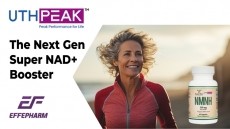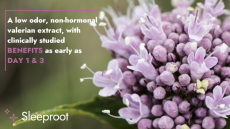LEO-HB bioavailability-boosting tech expands options for challenging ingredients

A glance around the aisles at SupplySide West shows that increasing bioavailability using technology like liposomes is an area of increased interest. Boosting bioavailability is nothing new – curcumin is a relatively recent example of ingredient suppliers engaging in a race to exceed the bioavailability-boosting claims of rivals.
Bringing a different take on the bioavailability challenge is Belgian company Eleonor, which is using a food grade matrix to turn, “poorly soluble, science-based active ingredients into high performance, instantly cold water dispersible and soluble powders with high bioavailability and efficacy”.
The technology opens up allows for challenging ingredients to be used in new delivery formats, including powders, effervescent formulas, liquid formulas, gummies, and more, said Benoit Turpin, the company’s Chief Operating Officer, who is driving the company’s US expansion.
Patented technology
The technology is protected by six different patents covering different countries, explained, with three new applications being filed in 2024, Fabian Priem, Eleonor’s founder and CEO, told NutraIngredients-USA.
The technology is not an encapsulation approach, nor does it have anything to do with micro particulates. The company describes the tech as “all natural”.
The patents themselves cover a broad array of possible approaches as they apply to the functional improvement of natural ingredients. The patents speak of ‘natural or synthetic’ versions of proteins, oligosaccharides and polysaccharides that are ‘thermoformed’ into the final state with the relevant bioactive.
“Each patent covers an entire family of compounds, so hundreds, if not thousands of compounds” added Turpin. “It does not use excipients or solvents, and customers can choose the carrier, including peptides, protein, carbohydrates, fibers, and so on.” This has clear benefits from a labeling perspective.
“Most of the other technologies that take a poorly dispersible ingredient are coating it with something to make it dispersible,” Priem told us. “We have a totally different approach using a food grade matrix.”
“The food grade matrix decreases the interindividual variability in absorption,” added Turpin.
The technology works by identifying the food grade ingredient that has best interaction with the bioactive, he explained. For mastic gum, for example, which is used for digestive health, then they look for a fiber. The sum is more than just adding the two together, he said.
“The technology is very simple,” said Priem, “but it’s not easy, and requires specific equipment.” The company’s R&D and manufacturing facilities are in the EU, but following a recent successful capital raise, they are exploring the potential of a second facility, which could possibly be in the US.
Ingredient list
The company already has 19 plug and play ingredients ready for finished formulations. They range from botanical ingredients normally offered as powdered or liquid extracts such as Andrographis, Boswellia, and CBD, to ingredients like Berberine, ursolic acid (a natural triterpene with reported anti-inflammatory activity), oleanolic acid (derived from plants like olive, and with reported anti-inflammatory activity and potential for blood sugar control and blood pressure management), and urolithin (derived from ellagitannins from fruit like pomegranate with a range of benefits linked to gut health and cellular aging).
The portfolio also included ingredients like mastic gum, CoQ10, and CLA.
In each case, the Eleonor technology greatly increases the solubility and bioavailability of these ingredients. Data from PK studies showed that the absorption of Boswellia was increased five times, while the availability of Andrographis was increased three times, said Turpin.
Market expansion
The company is already working with dietary supplements brands in the US, and the country is the main market for the company, said Turpin.
Having said that, ingredients have been commercially available in the EU for two years with products utilizing the technology available in France, Luxembourg, Greece, and Italy, as just a few examples, said Priem and Turpin.
The appeal in Europe is primarily with healthcare practitioner brands, said Turpin, who can more easily communicate the increased efficacy to their customers.
And it’s not just about working with brands who may be having problems with a particular ingredient, Eleonor also works with ingredient suppliers having problems with the dispersibility of their own products.
“From a performance standpoint, we can work with expensive ingredients, and because of the increases in bioavailability, we are now able to offer a more manageable price point,” said Turpin.












